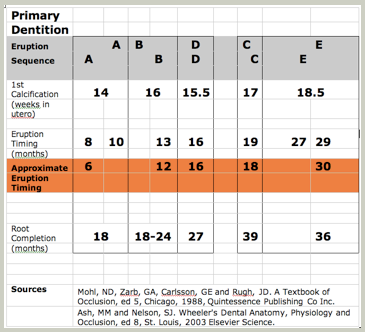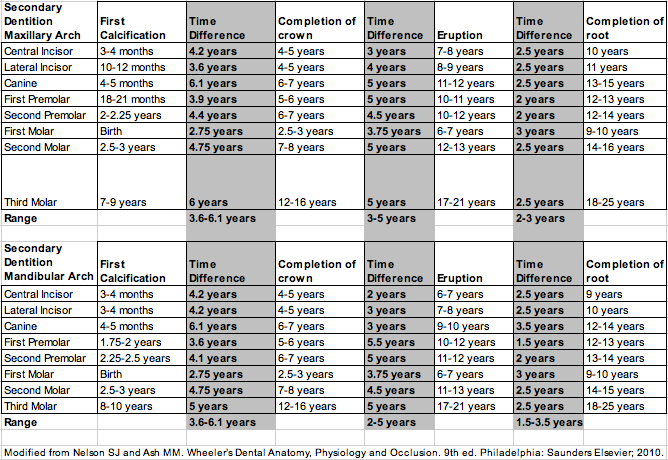Timing of Tooth Development
|
|
The normal stages of development of each of the primary and secondary teeth are important. The key events for the primary dentition are listed in the table on the left. Although there is a range of normal, this knowledge can assist in determining whether your patient's dentition is developing normally or not. Parents will frequently ask about whether their child's dentition is developing normally. In addition, this knowledge is invaluable in determining whether Individual teeth are congenitally missing. Aberrations in the timing of development may also provide insight into systemic problems. Summary Initial calcification of all of the primary teeth occurs between 14-19 weeks in utero. The primary dentition begins to erupt at 6 months of age. All primary incisors are present by 12 months of age. The primary first molars are present by 16 months of age. The primary canines are present by 18 months of age. The primary dentition is complete by 30 months or 2.5 years of age. |
|
|
Calcification of all of the teeth in the secondary dentition occurs from birth (permanent maxillary and mandibular first molars) to approximately 10 years of age (maxillary third molar). In this summary table of secondary (permanent) tooth development, there is a range of 3.6-6.1 years between the time of initial calcification of the crown until the crown is completed. On average, it takes anywhere from 2-5 years from the time of crown completion until the tooth erupts into the mouth. When teeth erupt, there is approximately 1/2 to 2/3 of the root formed. After a tooth erupts, further root formation occurs. On average, it takes 1.5-3.5 years for the root to completely form after tooth eruption. Variations among the timing of development for the permanent teeth are shown in the table above. |

